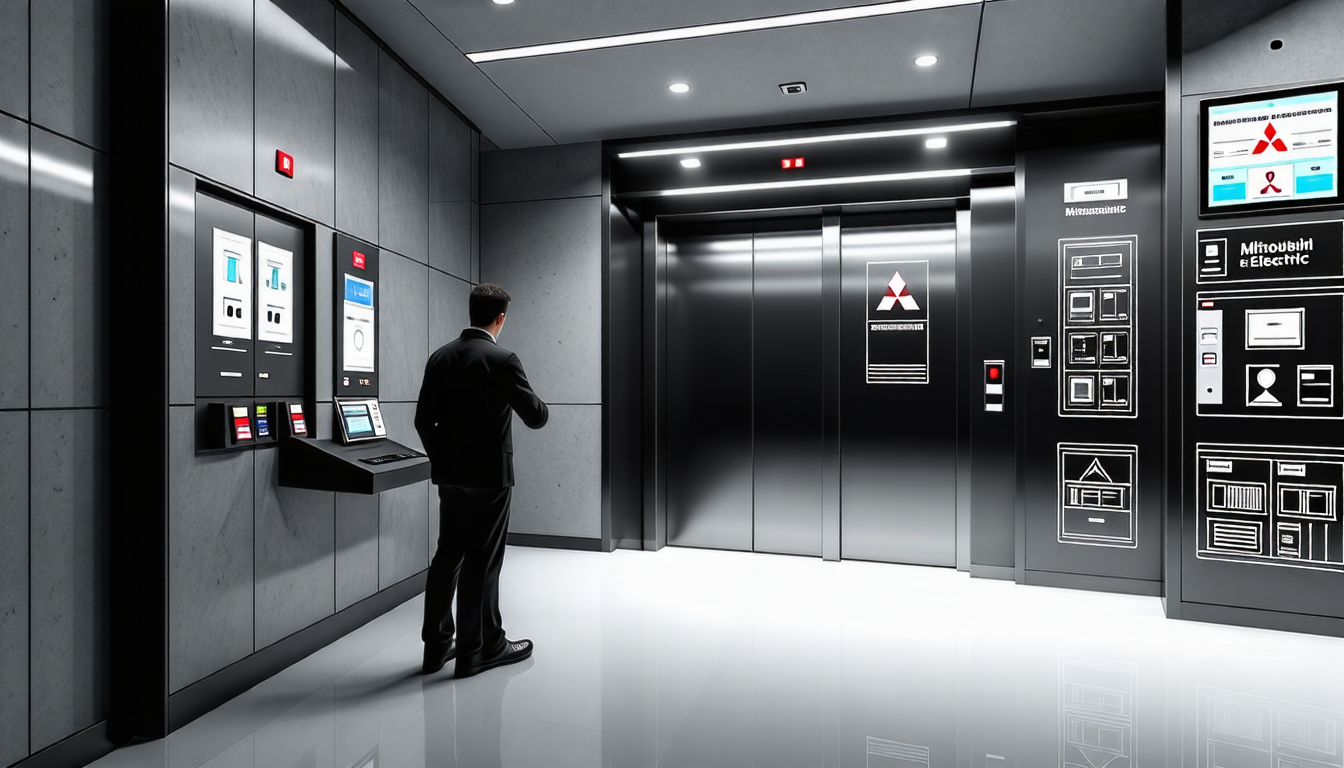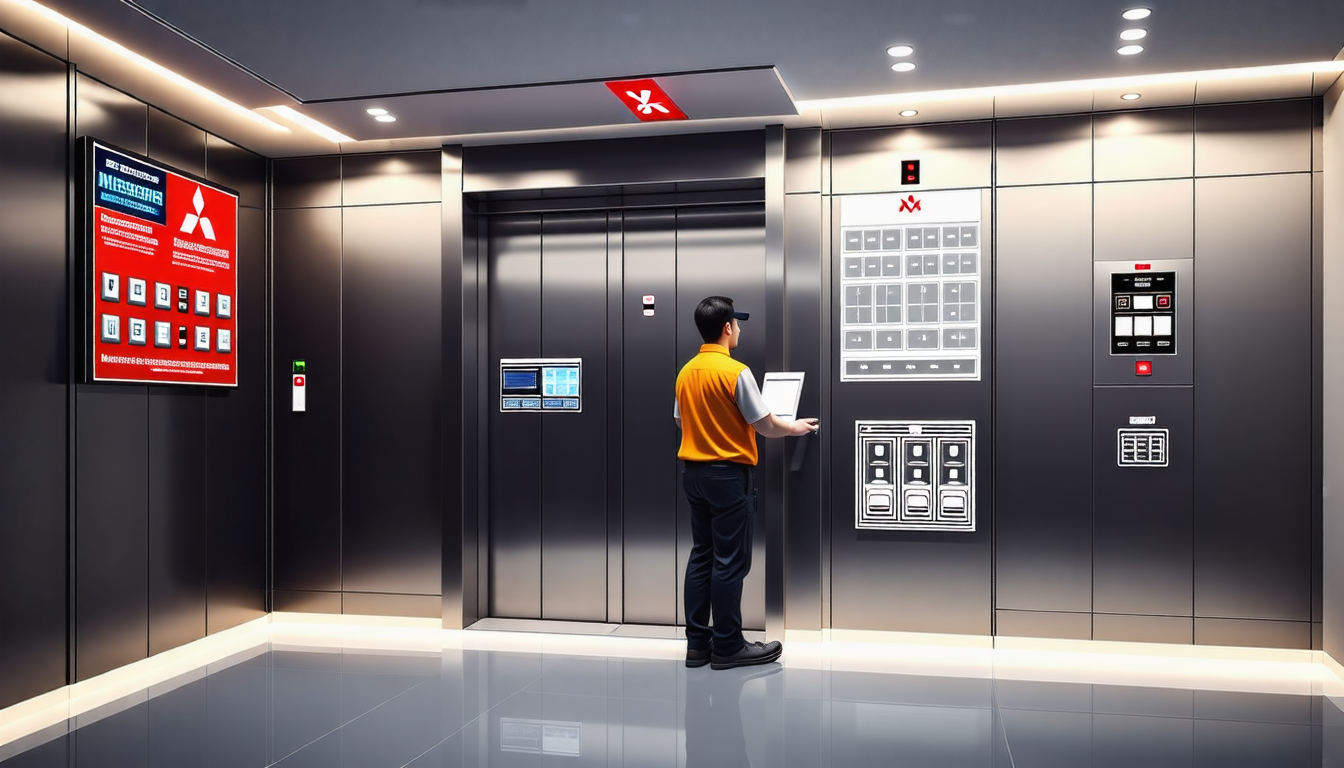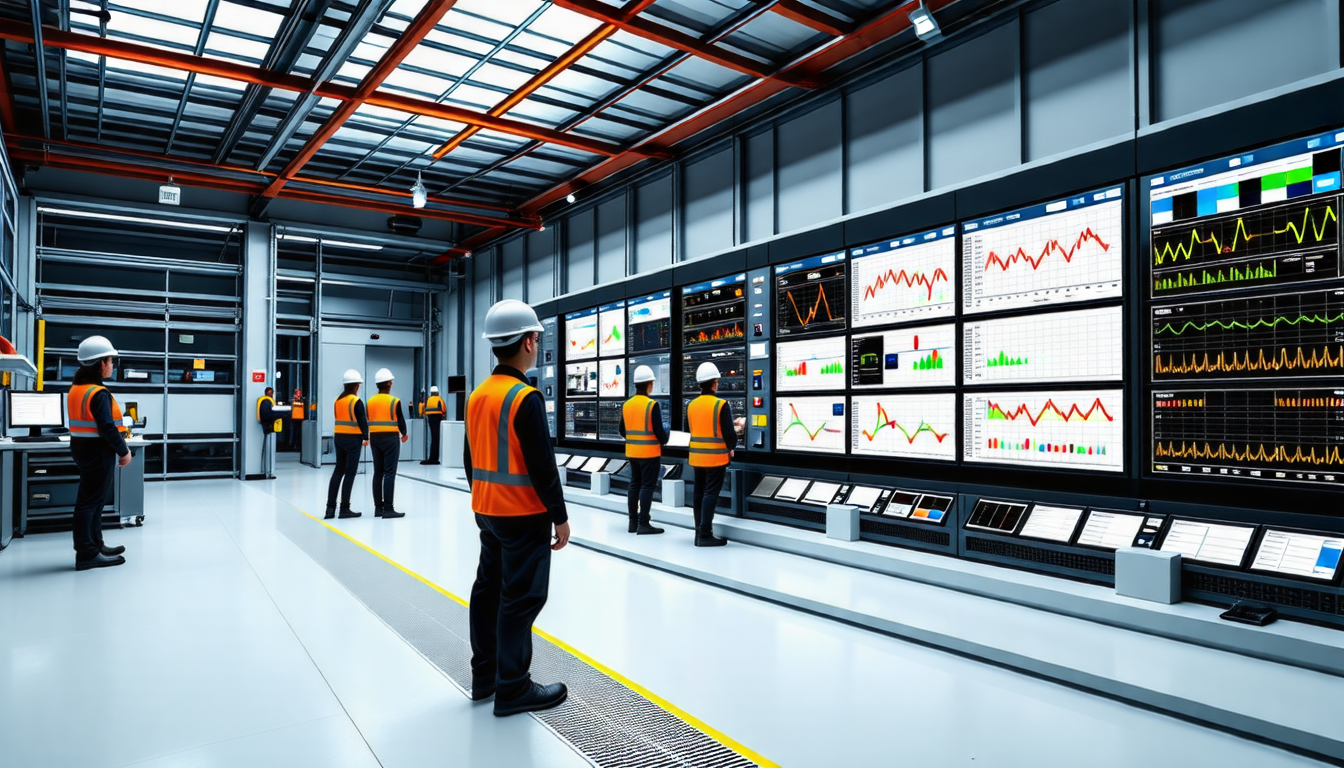|
IN BRIEF
|
Automating Mitsubishi Electric elevator doors requires a comprehensive understanding of the technologies and systems involved. The integration of advanced features such as the Intelligent Door System, powered by an RISC microprocessor and VVVF inverter technology, offers enhanced control over door operations, improving both efficiency and safety. Utilizing systems like the Elevator Group Control, which balances operational efficiency with energy consumption, allows for optimal performance in multi-elevator environments. Furthermore, the modernization of elevator systems, including the implementation of the Mitsubishi Emergency Landing Device (MELD), focuses on passenger safety and reliability, ensuring that elevators respond effectively to various conditions. By leveraging these technologies, professionals can streamline the automation processes, ensuring smooth, reliable operation tailored to the unique demands of commercial buildings.

Automating Mitsubishi Electric elevator doors involves integrating advanced technologies that enhance both functionality and user experience. By focusing on integrating the right systems, professionals can streamline operations, ensure safety, and enhance energy efficiency. Understanding the components involved is crucial to achieving optimal automation.
Understanding the Elevator Group Control System
The Elevator Group Control System is pivotal in managing several elevators within a building. This system is designed to select the most suitable elevator based on factors such as operational efficiency and energy consumption. By employing algorithms that prioritize efficiency during peak hours, the system ensures that the elevators operate cohesively, which can drastically improve wait times and overall user satisfaction. Implementing this system requires a thorough understanding of the building’s requirements and usage patterns to effectively balance load across the elevators.
Utilizing Intelligent Door Systems
At the core of Mitsubishi Electric’s elevator doors lies the Intelligent Door System. This advanced technology employs a RISC (Reduced Instruction Set Computer) microprocessor alongside VVVF (Variable Voltage Variable Frequency) inverters. These components work together to control the door’s operation with precision. The VVVF inverters allow for smooth and quiet door movements, reducing the noise typically associated with elevator operations. Thus, implementing these systems ensures not only enhanced passenger safety and comfort but also contributes to the overall reliability of the elevator system.
Implementing Dynamic Mapping Technology
Mitsubishi Electric has introduced a building dynamic map for controlling movements within a building, which is particularly useful for multi-elevator systems. By employing this technology, elevators can be operated based on real-time data, thereby improving the flow of traffic. This mapping technology takes into consideration various environmental factors such as the number of passengers waiting or the time of day, adjusting its operations accordingly. Integrating this mapping technology facilitates a seamless transportation experience within the building, addressing the dynamic needs of users.
Modernization and Safety Measures
For existing Mitsubishi elevators, modernization is a crucial step in ensuring ongoing performance and safety. The Mitsubishi Emergency Landing Device (MELD) is one such enhancement that can be implemented to boost passenger safety. MELD is engineered to safely land the elevator in the event of a power failure or other emergency situations, mitigating the risks associated with sudden halts in power or malfunctioning components. Regular modernization checks and installations of safety features are essential to adapt to evolving safety standards and technologies.
Advanced Door Control Mechanisms
Mitsubishi Electric’s elevators are equipped with sophisticated door control mechanisms that play a vital role in automating door operations. These mechanisms are specifically designed to detect variations in factors such as door load and wind strength that can affect their performance. By utilizing high-level control systems, these doors can automatically adjust to ensure smooth and secure operations, enhancing passenger convenience. Advanced controls also help in energy conservation by optimizing how long the doors remain open based on the passenger flow.
Automatic Door Speed Control
The Automatic Door Speed Control feature is another critical function that can be adopted to streamline door operations. This system intelligently adjusts the opening and closing speed of the doors based on situational demands—such as whether a stop was initiated from the lobby or from a specific floor. Such adaptability not only increases operational efficiency but also improves the overall user experience, ensuring that passengers can enter and exit swiftly and safely. Implementing this technology requires a comprehensive understanding of the system’s mechanics to ensure smooth integration and functionality.
Addressing Power Failures
A power failure can significantly disrupt elevator operations. To mitigate such issues, Mitsubishi Electric has incorporated features that allow the car to automatically move and stop at the nearest floor during a power outage. This is achieved using rechargeable battery systems, which provide the necessary energy to operate the motors for a limited time. Upon reaching the floor, the doors open automatically, facilitating a safe exit for passengers. Such provisions are vital for maintaining safety and minimizing panic during unforeseen circumstances.
Leveraging Advanced Production Techniques
Mitsubishi Electric prides itself on utilizing advanced production and testing techniques for its elevator door systems. By investing in cutting-edge technology, the company ensures that every door mechanism is rigorously tested to meet high standards of safety and reliability. This commitment to quality guarantees long-lasting performance and reduces the need for frequent repairs or replacements, thus contributing to a more efficient operational budget over the lifespan of the elevator system.
Integration with Access Control Systems
Effective automation also necessitates seamless integration with existing access control systems. Understanding the device protocols used by Mitsubishi elevator systems is crucial for this integration. This coordination not only provides enhanced security for building occupants but also improves user experience by streamlining access to elevators. Establishing a robust interface between the elevator system and access control mechanisms will ensure continuous and efficient operation.
Ongoing Maintenance and Upgrades
To ensure the longevity and optimal functionality of Mitsubishi Electric elevator doors, ongoing maintenance is essential. Regular inspections and upgrades to software and hardware components can prevent potential issues before they escalate. Keeping abreast of the latest advancements in elevator technology paves the way for implementing beneficial upgrades that enhance reliability and safety. Furthermore, training maintenance personnel on new systems and technologies ensures that they can effectively manage potential challenges.
Using Simulation Tools for Planning and Design
Utilizing simulation tools during the planning and design phases can significantly enhance the effectiveness of the elevator automation process. By modeling different scenarios, professionals can assess the potential performance of the elevator systems before implementation. This proactive approach allows for optimizing layout and operational strategies, reducing delays and minimizing costs associated with trial-and-error during installation.
Training Staff for Effective Operation
Training staff members on the operational capabilities of Mitsubishi Electric elevator systems is paramount for ensuring smooth automation. Staff should be knowledgeable about the various systems, controls, and safety features integrated into the elevators. Effective training helps not only in maximizing the utility of the elevator systems but also in enhancing passenger service. Continuous education on emerging technologies will empower the team to adapt quickly to innovations.
Analyzing User Feedback for Future Enhancements
A vital aspect of successfully automating elevator doors lies in analyzing user feedback. By collecting insights into user experiences, operators can identify areas for improvement and implement necessary changes to enhance the overall functionality of the elevator systems. Regular surveys and feedback mechanisms will guide decision-making around upgrades and modifications, ensuring that the systems evolve in line with user expectations.
Energy Efficiency Considerations
Energy efficiency is a key consideration in the automation of Mitsubishi Electric elevator doors. Adopting technologies such as regenerative drives can have a significant impact on energy consumption. These systems recover energy during operation and return it to the building’s electrical system, reducing overall energy usage while contributing to sustainability efforts. Understanding the energy profile of elevator systems and implementing efficiency measures can lead to substantial cost savings over time.
Customization to Meet Specific Needs
Finally, customizing the automation process to meet the specific needs of a building can lead to enhanced operational efficiency. Whether it involves adjusting settings based on anticipated traffic patterns or incorporating unique features for enhanced user experience, tailored solutions are often the most effective. Engaging with stakeholders during the design process allows for addressing specific requirements related to building usage and traffic flow, resulting in a more efficient elevator system.
To effectively automate Mitsubishi Electric elevator doors, one must focus on integrating advanced control systems that enhance operational efficiency while minimizing energy consumption. Employing an Intelligent Door System with a RISC microprocessor and VVVF inverters allows for precise control and adaptability, ensuring smooth door operations. The incorporation of a dynamic mapping technology facilitates optimal coordination of multiple elevators, improving the passenger experience. Prioritizing safety mechanisms, such as the Mitsubishi Emergency Landing Device (MELD), is essential, especially during power interruptions. Regular maintenance and modernization initiatives will ensure that the systems remain reliable and efficient over time, supporting the evolving needs of modern buildings.
Frequently Asked Questions on Automating Mitsubishi Electric Elevator Doors
What is the Elevator Group Control System?
The Elevator Group Control System optimally selects an elevator within a group based on operational efficiency and energy usage. Operational efficiency is prioritized to enhance overall performance.
How does the Intelligent Door System function?
The Intelligent Door System employs an advanced RISC microprocessor along with VVVF inverters, enabling precise control over elevator doors for smoother and more reliable operations.
What technology does Mitsubishi Electric use for in-building mobility management?
Mitsubishi Electric utilizes a newly developed building dynamic map to manage the movements of multiple in-building mobilities, enhancing coordination and performance.
What modernization features are included in Mitsubishi Elevators?
Modernization includes implementing the Mitsubishi Emergency Landing Device (MELD) for increased safety, along with improvements to ensure that elevators function optimally.
What advantages does VVVF inverter control provide?
The adoption of VVVF inverter control results in smoother and quieter door operations, which subsequently enhances passenger safety and overall product reliability.
How do high-level door controls benefit elevators?
Elevators without machine rooms are equipped with high-level door controls that are capable of detecting and accommodating constant variations in door load and wind strength, ensuring optimal performance.
What is Automatic Door Speed Control (DSAC)?
Automatic Door Speed Control (DSAC) modifies the duration the doors remain open based on whether the stop was initiated from the hall or the cabin, improving efficiency.
How do doors react during a power failure?
In case of a power failure, a car equipped with this feature will automatically move to the nearest floor using a rechargeable battery, and the doors will open for passenger safety and accessibility.
What types of elevator doors does Mitsubishi manufacture?
Mitsubishi produces various types of elevator doors, including the advanced telescopic door models designed for effective automation and reliability in operation.

